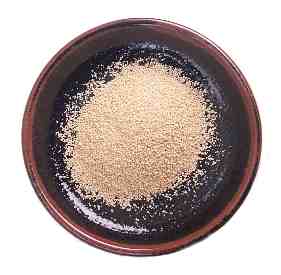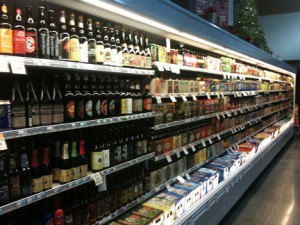 It’s all in the yeast and there are only two kinds – those that float (ales) and those that don’t (lagers). But don’t confuse beer yeast with brewers yeast that is typically used in health products.
It’s all in the yeast and there are only two kinds – those that float (ales) and those that don’t (lagers). But don’t confuse beer yeast with brewers yeast that is typically used in health products.
Lagers vs. Ales – It’s a Process
Who knew that beer could be broken down to two basic categories: lagers and ales. Wow! All those choices on the shelf and they basically fall into two categories. Simple, right? Not quite. It’s one thing to be able to name a type of beer. It’s quite another to understand alcohol content, bitterness, color and all the other things that help you decide the type of beer you prefer. So sit back and soak this in. Break it out when you want to look smarter than the rest of the guys at the bar (and get your ass kicked in the process) or when you want to impress someone at dinner (over a few beers).
Follow along closely:
Yeast
It’s a simple question: Are you a top or a bottom? Whoops, sorry. Wrong question. Whether the yeast is on top or bottom decides what type of beer you’re talking about. With ales the yeast floats or rises to the top of the fermentation tank; with lagers yeast settles to the bottom of the tank.
The types of yeast used for lager brews will not add any flavors, but the yeast in ales can add flavor to the brew through the production of chemicals in the fermentation process called esters.
Temperature and Time
In ales yeasts ferment best at room temperature up to about 75° Fahrenheit. They finish faster than lagers and have an edgy flavor.
Lagers must be cooled to ferment (46-59°F). The word “lager” comes from the German word “lagern,” which means “to store,” referring to the longer lagering process that creates the mild, crisp taste.
 Although there are only two types of yeasts they create thousands of different styles of beer. These styles are defined by length of processing and recipe or ingredients.
Although there are only two types of yeasts they create thousands of different styles of beer. These styles are defined by length of processing and recipe or ingredients.Additional Ingredients
Ales can have hops, malt and roasted malts, creating a more prominent malty taste and bitterness. Having lots of ingredients also lends itself to experimentation. Brewers will add other ingredients called adjuncts to affect or create flavors.
Lagers typically follow the German purity law of 1516, which limits the ingredients to malted grain, hops, yeast and water. This limits creativity of adding ingredients, so flavor, color and alcohol content all come from variations in how these are prepared or fermented.
Ales vs. Lagers
When it’s all said and done, we like beer, and whether it is an ale or a lager we enjoy. You will find that ales tend to have higher ratings and lagers that take longer and are more difficult to brew don’t do as well with the beer drinking community. So grab a lager every now and then and spread the love.
